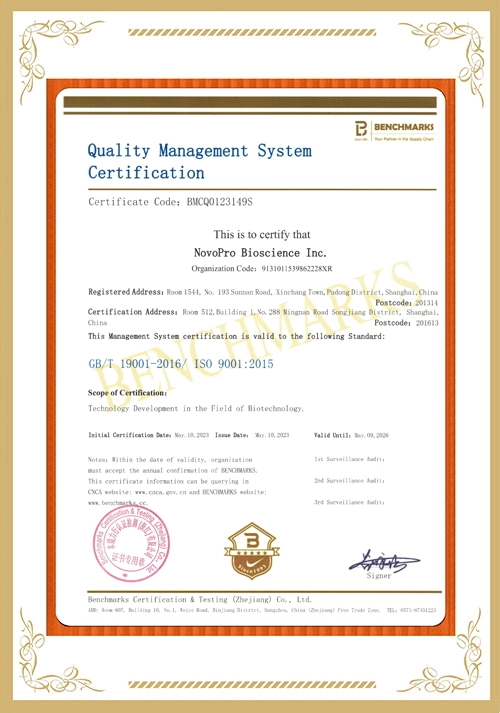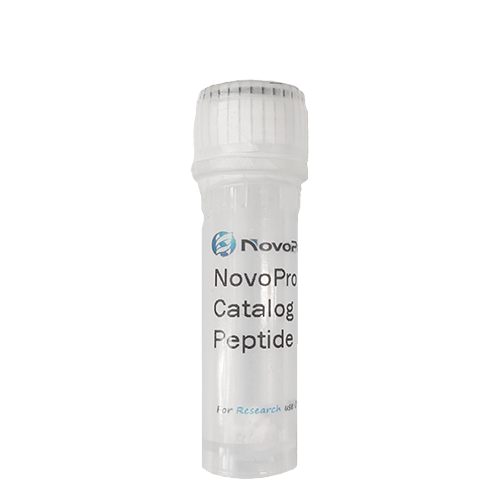CES peptide (Cyclic)
Not For Human Use, Lab Use Only.
Cat.#: 319767
Special Price 119.40 USD
-
Product Name
CES peptide (Cyclic)
-
Documents
Batch to batch variation of the purity
-
Sequence Shortening
Ac-CESPLLSEC-NH2 (disulfide bond: Cys1-Cys9)
-
Sequence
Ac-Cys-Glu-Ser-Pro-Leu-Leu-Ser-Glu-Cys-NH2 (disulfide bond: Cys1-Cys9)
-
Length (aa)
9
-
Peptide Purity (HPLC)
95.49%
-
Molecular Formula
C39H63N9O16S2
-
Molecular Weight
978.09
-
Source
Synthetic
-
Form
Powder
-
Description
CES (CESPLLSEC) is a cyclic peptide targeting glioblastoma by recognizing aberrantly exposed SNAP25 isoforms. Its structure enhances stability and binding specificity for tumor-selective accumulation.
-
Storage Guidelines
Normally, this peptide will be delivered in lyophilized form and should be stored in a freezer at or below -20 °C. For more details, please refer to the manual: Handling and Storage of Synthetic Peptides
-
References
- Arias, Alberto G.; Tovar-Martinez, Laura; Asciutto, Eliana K.; Mann, Aman; Põšnograjeva, Kristina; Gracia, Lorena Simón; et al. (2024). A Cyclic Peptide Targets Glioblastoma by Binding to Aberrantly Exposed SNAP25. ACS Publications. Collection. https://doi.org/10.1021/acs.molpharmaceut.4c00958
-
About TFA salt
Trifluoroacetic acid (TFA) is a common counterion from the purification process using High-Performance Liquid Chromatography (HPLC). The presence of TFA can affect the peptide's net weight, appearance, and solubility.
Impact on Net Weight: The TFA salt contributes to the total mass of the product. In most cases, the peptide content constitutes >80% of the total weight, with TFA accounting for the remainder.
Solubility: TFA salts generally enhance the solubility of peptides in aqueous solutions.
In Biological Assays: For most standard in vitro assays, the residual TFA levels do not cause interference. However, for highly sensitive cellular or biochemical studies, please be aware of its presence.
-
Molar Concentration Calculator
-
Dilution Calculator
-
Percent Concentration Calculator
Mass (g) = Concentration (mol/L) × Volume (L) × Molecular Weight (g/mol)
Related Products / Services
• Peptide Services: NovoPro's peptide synthesis services include standard chemical peptide synthesis, peptide modification, peptide libraries, and recombinant peptide expression.
• Standard Peptide Synthesis: NovoPro offers quality peptides at the most competitive prices in the industry, starting at $3.20 per amino acid. NovoPro provides PepBox – Automatic Quote Tool for online price calculation.
• Peptide Modifications: NovoPro offers a wide range of peptide modification services including isotope labeling (2H, 15N, and 13C), multiple disulfide bonds, multiple phosphorylations, KLH, BSA, ovalbumin, amidation, acetylation, biotin, FITC, etc.
Please note: All products are "FOR RESEARCH USE ONLY AND ARE NOT INTENDED FOR DIAGNOSTIC OR THERAPEUTIC USE"

